Three more players from the 2016 draft class appear here, along with five prospects who've already been traded since they first entered pro ball.
As the numbers get smaller here, you'll notice the prospects I'm ranking have higher and higher upsides, and we're past the part of the list where the higher-floor but lower-ceiling prospects reside.
Editor's note: Age is the player's age as of July 1, 2017.
Top 100 prospects ranked 1-20 | 21-40 | 41-60 | 61-80 | 81-100 | Index
 40. Walker Buehler, RHP, Los Angeles Dodgers
40. Walker Buehler, RHP, Los Angeles Dodgers
Age: 22 (7/28/94) | B/T: R/R
Height: 6-2 | Weight: 175
Top level: Low-A | 2016: NR
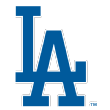 Buehler was headed for a top 15 pick in the 2015 MLB draft before his junior season, but missed time with a sore elbow, pitched poorly down the stretch, and slipped to the Dodgers at 24th overall, only to have the team confirm during his post-draft physical that he’d need Tommy John surgery. When he returned to the mound in 2016, he was a completely different animal, touching 100 mph with his fastball and sitting in the mid-90s, even though he said he wasn’t doing anything different to try to throw harder.
Buehler was headed for a top 15 pick in the 2015 MLB draft before his junior season, but missed time with a sore elbow, pitched poorly down the stretch, and slipped to the Dodgers at 24th overall, only to have the team confirm during his post-draft physical that he’d need Tommy John surgery. When he returned to the mound in 2016, he was a completely different animal, touching 100 mph with his fastball and sitting in the mid-90s, even though he said he wasn’t doing anything different to try to throw harder.
The big variable around Buehler’s projection is what his stuff will look like during a regular season of work where he’s pitching deeper into games. Buehler threw 92-95 mph as a starter before the injury, typically working once a week, then 88-92 mph a few weeks before he was drafted; his summer 2016 spike was an entirely new level of velocity and arm speed, and we don’t know if he’ll maintain it. He had an above-average slider and changeup before the injury, but scouts have always been concerned about his slight build holding up in a 200-inning role. If he stays healthy and holds this newfound velocity, he’s a top 25 prospect, and could race through the low minors to the big leagues as soon as his workload permits.
 39. Amir Garrett, LHP, Cincinnati Reds
39. Amir Garrett, LHP, Cincinnati Reds
Age: 25 (5/3/92) | B/T: L/L
Height: 6-5 | Weight: 210
Top level: Triple-A | 2016: 86
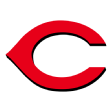 Garrett has made enormous progress during his three full years in pro ball, since he gave up basketball and committed to more than just a few weeks on the diamond every summer. He is now in line for a spot on the Reds’ major-league staff. Garrett pitches consistently at 92-94 mph and can touch 96, showing an above-average slider at 82-84 mph and an average or better changeup in a similar range, coming from a slot a little under three-quarters that makes him death on left-handed hitters -- he punched out over 30 percent of lefties he faced in 2016 across two levels.
Garrett has made enormous progress during his three full years in pro ball, since he gave up basketball and committed to more than just a few weeks on the diamond every summer. He is now in line for a spot on the Reds’ major-league staff. Garrett pitches consistently at 92-94 mph and can touch 96, showing an above-average slider at 82-84 mph and an average or better changeup in a similar range, coming from a slot a little under three-quarters that makes him death on left-handed hitters -- he punched out over 30 percent of lefties he faced in 2016 across two levels.
Garrett’s main issue has always been command. He’s about as athletic a pitcher as I’ve ever seen, and his arm works well, but it’s all so loose and easy that he can struggle to get to the same release point consistently. When he reached Triple-A last summer, he struggled for the first time in full-season ball, even though his raw stuff was still there. I believe strongly in betting on highly athletic kids like Garrett to make adjustments, the way Jeff Samardzija -- another two-sport guy who didn’t play baseball full-time until after college -- did in his late 20s, and could see Garrett working on command for a year in the Reds’ bullpen before he becomes a midrotation starter.
 38. Lewis Brinson, CF, Milwaukee Brewers
38. Lewis Brinson, CF, Milwaukee Brewers
Age: 23 (5/8/94) | B/T: R/R
Height: 6-3 | Weight: 195
Top level: Triple-A | 2016: 32
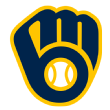 Brinson remains more tools than production at this point, struggling in his second stint in Double-A with the Rangers before the Brewers traded for him in July. But he’s also not that far off from an offensive level that would make him a major-league regular. Brinson is a gifted athlete who runs well, plays outstanding defense in center and has electric wrists that give him the bat speed to produce plus raw power -- which hasn’t shown up that much in games because he has often struggled with contact. He did post the lowest strikeout rate of his career in 2016, and while he can be aggressive, his hands are so loose it’s a little surprising that he didn’t make more hard contact this past year.
Brinson remains more tools than production at this point, struggling in his second stint in Double-A with the Rangers before the Brewers traded for him in July. But he’s also not that far off from an offensive level that would make him a major-league regular. Brinson is a gifted athlete who runs well, plays outstanding defense in center and has electric wrists that give him the bat speed to produce plus raw power -- which hasn’t shown up that much in games because he has often struggled with contact. He did post the lowest strikeout rate of his career in 2016, and while he can be aggressive, his hands are so loose it’s a little surprising that he didn’t make more hard contact this past year.
If anything, the bigger concern going forward is his history of injuries, as he’s reached 110 games in just one season since he first signed, losing a month of 2016 to a shoulder strain, although he played marginally better after his return. Brinson will turn 23 in May and should start the year in hitter-friendly Colorado Springs, Colorado, where he’ll probably put up some great superficial numbers. His defense is so good that he can be a regular even with a .300 OBP and his kind of raw power, but he’s ranked here because any further increase in his contact rate or the quality of the contact he’s making would make him a star.
 37. Francis Martes, RHP, Houston Astros
37. Francis Martes, RHP, Houston Astros
Age: 21 (11/24/95) | B/T: R/R
Height: 6-1 | Weight: 225
Top level: Double-A | 2016: 40
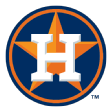 Martes gets a lot of Johnny Cueto comparisons, which fits both in terms of his physical appearance and his style of pitching, which is very aggressive and has him throwing both his fastball and breaking ball for strikes. When he’s online to the plate, Martes will throw heat that sits in the low 90s with good sink, but he can reach back for 98-99 mph up in the zone to try to get a swing and miss, and he’ll show a 70 curveball with short, hard break, along with a hard changeup that comes in 89-90 with some cutting action but probably needs to be slower.
Martes gets a lot of Johnny Cueto comparisons, which fits both in terms of his physical appearance and his style of pitching, which is very aggressive and has him throwing both his fastball and breaking ball for strikes. When he’s online to the plate, Martes will throw heat that sits in the low 90s with good sink, but he can reach back for 98-99 mph up in the zone to try to get a swing and miss, and he’ll show a 70 curveball with short, hard break, along with a hard changeup that comes in 89-90 with some cutting action but probably needs to be slower.
Martes’ delivery can come apart on him, and when he flies open at release -- which he did in his first outing at the AFL, which I saw -- everything flies up to his arm side, so hitters square up on his fastball and he can’t finish his breaking ball out front. Frances just turned 21 in November and has already succeeded in Double-A, so there’s time to work on getting his delivery consistent start to start, and he should appear in the majors at some point this year, with the potential for him to be a solid No. 2 starter or more depending on that delivery question.
 36. Ronald Acuna, CF, Atlanta Braves
36. Ronald Acuna, CF, Atlanta Braves
Age: 19 (12/18/97) | B/T: R/R
Height: 6-0 | Weight: 180
Top level: Low-A | 2016: NR
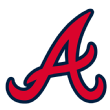 Acuna’s big breakout season was cut short when he tore ligaments in his thumb suffered on a head-first slide. The injury limited him to just 40 games for low-A Rome where he hit .311/.387/.432 with a 16 percent strikeout rate as an 18-year-old, although he did go to Australia this winter to make up for some of the lost at-bats.
Acuna’s big breakout season was cut short when he tore ligaments in his thumb suffered on a head-first slide. The injury limited him to just 40 games for low-A Rome where he hit .311/.387/.432 with a 16 percent strikeout rate as an 18-year-old, although he did go to Australia this winter to make up for some of the lost at-bats.
Acuna is a four-tool player now, with the chance to develop power in time as he fills out physically. He has a simple but hard swing, making it all the more impressive that he so rarely struck out last summer. He’s a plus runner but not a terribly instinctive one yet, with his speed playing up more on defense than on the bases.
Had Acuna raked over a full season, I likely would have had him higher on this list, but the sample is a little small for that since he didn’t have to face pitchers multiple times. He does have the ceiling of an elite player -- a .300/.375 AVG/OBP guy with 15-plus homers and plus-plus defense in center, which could make him a top 10 or 15 player in the league if he gets there.
 35. Leody Taveras, OF, Texas Rangers
35. Leody Taveras, OF, Texas Rangers
Age: 18 (9/8/98) | B/T: B/R
Height: 6-1 | Weight: 170
Top level: Short-season A-ball | 2016: NR
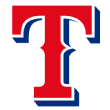 Taveras is one of the youngest players on this list, turning 18 in September after the season had ended, but he is clearly the Rangers’ best prospect and one of their only potential stars. Taveras looks the part of a toolsy 17-year-old baseball prospect, and while that’s true of a lot of teenagers in this system, he’s got more present baseball ability than other similarly toolsy prospects in Texas' low minors. Even so, Taveras has a live body that’s more projection than present performance. For example, he’ll show plus raw power in BP, but he hit just one homer in 333 PAs last summer at age 17.
Taveras is one of the youngest players on this list, turning 18 in September after the season had ended, but he is clearly the Rangers’ best prospect and one of their only potential stars. Taveras looks the part of a toolsy 17-year-old baseball prospect, and while that’s true of a lot of teenagers in this system, he’s got more present baseball ability than other similarly toolsy prospects in Texas' low minors. Even so, Taveras has a live body that’s more projection than present performance. For example, he’ll show plus raw power in BP, but he hit just one homer in 333 PAs last summer at age 17.
He’s a plus defender in center now and has a plus arm, with above-average running speed (I had scouts vary their run grades from average to plus). The biggest discrepancy I heard was on his feel to hit now. While everyone agreed he’s going to hit in time, he might not be ready for full-season ball this year as an 18-year-old. That doesn’t alter his ceiling necessarily, but changes his probability because we may be projecting more improvement on the bat. Everyone I asked agreed that he’s a future 60, a well above-average regular who’ll make some All-Star teams, but that might not happen until 2020 or later.
 34. Corey Ray, OF, Milwaukee Brewers
34. Corey Ray, OF, Milwaukee Brewers
Age: 22 (9/22/94) | B/T: L/L
Height: 5-11 | Weight: 185
Top level: High-A | 2016: NE
 Ray was the top prospect on my board in this year’s draft class, and while he was somewhat surpassed this summer by a few other players who showed more in their pro debuts, Ray also was pushed very aggressively to high-A right out of the draft, which exposed some of his weaknesses in a way that no other recent draftee experienced.
Ray was the top prospect on my board in this year’s draft class, and while he was somewhat surpassed this summer by a few other players who showed more in their pro debuts, Ray also was pushed very aggressively to high-A right out of the draft, which exposed some of his weaknesses in a way that no other recent draftee experienced.
Ray has above-average tools across the board except on defense. He’s fleet enough for center but didn’t play it well in college, with the University of Louisville coaches moving him to left field (where, in my opinion, he was worse) late in games to put in a superior defender in center. Defense often gets better in pro ball where there is more instruction, and Ray has the athletic ability to play in the middle if his reads improve. At the plate, he has a patient approach and recognizes pitches well, and isn’t afraid to run deep counts to try to get a favorable pitch to drive.
I thought Ray offered the best combination of probability -- he had well over a 50 percent chance to be a good big-leaguer in some role -- and chance to be an above-average regular, a guy who hits .280/.360/.460 with at least average defense in center field. He may be behind a few guys with higher ceilings now (Quantrill, Groome, Senzel, Rutherford), but I still see the same future for Ray as I did in June.
 33. Kevin Newman, SS, Pittsburgh Pirates
33. Kevin Newman, SS, Pittsburgh Pirates
Age: 23 (8/4/93) | B/T: R/R
Height: 6-1 | Weight: 180
Top level: Double-A | 2016: 23
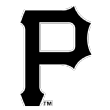 Newman was one of the toughest hitters in pro ball to strike out in 2016, whiffing just 36 times in 457 plate appearances across two levels. By comparison, no MLB hitter with at least 400 PA struck out that infrequently, with Andrelton Simmons coming closest at 38. So Newman can put the ball in play, but in 2016 he started to put it in the air more often and show some power, even after a midyear promotion to Double-A. The Pirates have worked to close his stance a little bit so he can pull the ball more.
Newman was one of the toughest hitters in pro ball to strike out in 2016, whiffing just 36 times in 457 plate appearances across two levels. By comparison, no MLB hitter with at least 400 PA struck out that infrequently, with Andrelton Simmons coming closest at 38. So Newman can put the ball in play, but in 2016 he started to put it in the air more often and show some power, even after a midyear promotion to Double-A. The Pirates have worked to close his stance a little bit so he can pull the ball more.
Newman also worked extensively with manager Joey Cora at Double-A on his defense at short, where his hands are his best tool and his range has improved. He’s an average runner, down a bit from college, maybe 50 out of the box and 55 underway, enough to stretch some hits for an extra base but not likely to be a 20-steals guy.
He’s going to have to continue to develop extra-base power to become more than an everyday player at short, or, as one scout suggested, a “Joe Maddon kind of super-utility player” who moves all over the place but plays regularly because of his bat. There’s enough pure hit tool here to get him an everyday job, most likely as Pittsburgh’s shortstop within the year.
 32. Kolby Allard, LHP, Atlanta Braves
32. Kolby Allard, LHP, Atlanta Braves
Age: 19 (8/13/97) | B/T: L/L
Height: 6-1 | Weight: 180
Top level: Low-A | 2016: 43
 Allard was the 14th pick in the 2015 draft, sliding out of the top 10 because of a stress reaction in his lower back that didn’t affect his long-term outlook but meant he barely pitched in his senior year of high school. He dominated the short-season Appy League in five starts, then moved up to full-season Rome and still struck out more than a man per inning in 11 starts there, all while working on short pitch counts and maxing out at 93 in a single outing.
Allard was the 14th pick in the 2015 draft, sliding out of the top 10 because of a stress reaction in his lower back that didn’t affect his long-term outlook but meant he barely pitched in his senior year of high school. He dominated the short-season Appy League in five starts, then moved up to full-season Rome and still struck out more than a man per inning in 11 starts there, all while working on short pitch counts and maxing out at 93 in a single outing.
Allard works in the low 90s, touching 95-96, with his fastball, and has a knockout curveball that’s plus now and could end up a 70 as he fills out. His changeup is solid-average now, trending upward as well, as he barely used it in high school (before the injury). Allard is not necessarily built for 200 innings, as he’s a shade taller than 6 feet and under 200 pounds, but his arm works so easily that he looks like a lower risk for arm injury -- and it means his average command could end up plus as well. I think he ends up a No. 2 starter, with some downside risk here given his youth and track record of just 93 ⅔ innings so far in pro ball.
 31. Alex Verdugo, OF, Los Angeles Dodgers
31. Alex Verdugo, OF, Los Angeles Dodgers
Age: 21 (5/15/96) | B/T: L/L
Height: 6-0 | Weight: 205
Top level: Double-A | 2016: 51
 Verdugo has raced up the Dodgers’ chain with Cody Bellinger, and while Bellinger has emerged as a likely cornerstone player, Verdugo isn’t that far behind him. Verdugo was the Dodgers’ second-round pick in 2014, a year after they took Bellinger, and the Dodgers were aggressive with both of them, assigning them to Double-A in 2016 in their age-20 seasons. (Bellinger is 10 months older, but his birthday is in July, so their seasonal ages, determined by age on July 1st, are the same.)
Verdugo has raced up the Dodgers’ chain with Cody Bellinger, and while Bellinger has emerged as a likely cornerstone player, Verdugo isn’t that far behind him. Verdugo was the Dodgers’ second-round pick in 2014, a year after they took Bellinger, and the Dodgers were aggressive with both of them, assigning them to Double-A in 2016 in their age-20 seasons. (Bellinger is 10 months older, but his birthday is in July, so their seasonal ages, determined by age on July 1st, are the same.)
Verdugo was the youngest regular in the Texas League this year, and was above the league average in all three rate stats, yet had the third-lowest strikeout rate of anyone who played half a season or more there. (Second was fellow Dodgers prospect Willie Calhoun, who can hit but lacks a position.) Verdugo has played more center in pro ball, but there’s at least a 60/40 chance he’ll move to right field in favor of a better defender, although with good range and an 80 arm he could be an elite glove in the corner.
The main concern on Verdugo isn’t skill; he can hit and should grow into above-average power. But his makeup is an issue, as Verdugo is a very intense player who has acted out in front of scouts in ways that seem to be affecting his trade value. He wouldn’t be the first 20-year-old who needs to grow up, and there are few 20-year-olds with his pure ability to square up a baseball.
 30. Mickey Moniak, OF, Philadelphia Phillies
30. Mickey Moniak, OF, Philadelphia Phillies
Age: 19 (5/13/98) | B/T: L/R
Height: 6-2 | Weight: 185
Top level: Rookie | 2016: NE
 The first pick in the 2016 draft, Moniak is a high-floor, teenage-position-player prospect, meaning he’s more likely to play in the big leagues than 90 percent of high school prospects taken high in the draft. In Moniak’s case, it’s a combination of his defensive value, his makeup and scouts’ faith in his bat that gives him that designation, although I think it shortchanges his potential upside during the long haul into his late 20s.
The first pick in the 2016 draft, Moniak is a high-floor, teenage-position-player prospect, meaning he’s more likely to play in the big leagues than 90 percent of high school prospects taken high in the draft. In Moniak’s case, it’s a combination of his defensive value, his makeup and scouts’ faith in his bat that gives him that designation, although I think it shortchanges his potential upside during the long haul into his late 20s.
For now, Moniak is a true center fielder who is a plus runner and should end up a plus defender at that spot because he’s rangy and gets good reads. At the plate, despite his height, Moniak has a short swing that produces a lot of line drives, and he uses the whole field well but doesn’t pull the ball much for power or drop the bat head to get some more loft into his finish. He’s a four-tool guy, lacking the power, but I don’t think it’s out of the question that he could find power with some small changes to his swing, especially where and how he starts his hands.
If the Phillies simply don’t want to mess with a good thing, however, Moniak might end up an All-Star anyway because you could say it’s a future 70 bat on a true center fielder who will add value with his glove. That’s the kind of high-floor prospect I like.
 29. Dominic Smith, 1B, New York Mets
29. Dominic Smith, 1B, New York Mets
Age: 22 (6/15/95) | B/T: L/L
Height: 6-0 | Weight: 250
Top level: Double-A | 2016: 29
 I’ve written since Smith was an amateur that he has raw power, but in his first two seasons in full-season ball he hit just seven homers, as playing his home games in very pitcher-friendly parks led him to focus on going the other way. In 2016, he started pulling the ball more, and hit 14 homers, more than doubling his career total to date, along with 29 doubles to finish with a .302/.367/.457 line. Smith is an extraordinarily disciplined, calm hitter, striking out in just 13 percent of his plate appearances last year, showing an advanced two-strike approach and willingness to use the whole field. In addition to just generally pulling the ball more in 2016, Smith also got the ball in the air more often, which is critical to boosting his batting average since he’s a well below-average runner.
I’ve written since Smith was an amateur that he has raw power, but in his first two seasons in full-season ball he hit just seven homers, as playing his home games in very pitcher-friendly parks led him to focus on going the other way. In 2016, he started pulling the ball more, and hit 14 homers, more than doubling his career total to date, along with 29 doubles to finish with a .302/.367/.457 line. Smith is an extraordinarily disciplined, calm hitter, striking out in just 13 percent of his plate appearances last year, showing an advanced two-strike approach and willingness to use the whole field. In addition to just generally pulling the ball more in 2016, Smith also got the ball in the air more often, which is critical to boosting his batting average since he’s a well below-average runner.
Smith is an above-average defender at first whose 70 arm is sort of wasted at the position, and has worked this offseason on improving his conditioning, which was a concern last year as he was playing at what I’ll politely call the top end of the acceptable range for his weight. There’s still untapped power here, but given the progress Smith has already made in games this year, I expect 20-plus homers from him this year or next along with the same high averages and doubles totals he posted in 2015 and 2016.
 28. James Kaprielian, RHP, New York Yankees
28. James Kaprielian, RHP, New York Yankees
Age: 23 (3/2/94) | B/T: R/R
Height: 6-4 | Weight: 200
Top level: High-A | 2016: 87
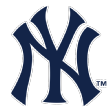 Kaprielian came to spring training throwing fire, touching 97 mph regularly, a whole level of arm speed beyond what he had shown at UCLA. Then he carried it through four regular-season starts before his elbow barked and the Yankees shut him down -- for the entire season, as it turned out, only bringing him back for the Arizona Fall League. In his first outing there, he was throwing 94-97 in three dominant innings with a hard slider clocked anywhere from 82-89 mph, complemented with a string-puller changeup in the mid-80s. That’s three plus pitches from a guy who is now built like a brick house.
Kaprielian came to spring training throwing fire, touching 97 mph regularly, a whole level of arm speed beyond what he had shown at UCLA. Then he carried it through four regular-season starts before his elbow barked and the Yankees shut him down -- for the entire season, as it turned out, only bringing him back for the Arizona Fall League. In his first outing there, he was throwing 94-97 in three dominant innings with a hard slider clocked anywhere from 82-89 mph, complemented with a string-puller changeup in the mid-80s. That’s three plus pitches from a guy who is now built like a brick house.
There’s a little effort to his delivery, although less than you’d expect given that stuff, and just a minimal leg kick to get his rhythm going, but I can’t see changing a thing now that he’s completely recovered from the injury. Had he done this all season last year, he’d be in the top 20. I’ve got him ranked here to reflect the greater risk of a catastrophic injury that I think he has compared to pitchers who have never missed this kind of time. But do not mistake the ranking for a lack of faith in Kaprielian the pitcher, who has ace probability commensurate with those near the top of the 100.
 27. Clint Frazier, OF, New York Yankees
27. Clint Frazier, OF, New York Yankees
Age: 22 (9/6/94) | B/T: R/R
Height: 6-1 | Weight: 190
Top level: Triple-A | 2016: 72
 Frazier was the headliner in the package of prospects going to the Bronx for Andrew Miller, having reached Triple-A as a 21-year-old after a year and a half of raking his way up from A-ball. He has absolutely electric bat speed that produces above-average power, probably never in the 30-homer range but certainly 15-20 on a consistent basis with high batting averages and a lot of doubles.
Frazier was the headliner in the package of prospects going to the Bronx for Andrew Miller, having reached Triple-A as a 21-year-old after a year and a half of raking his way up from A-ball. He has absolutely electric bat speed that produces above-average power, probably never in the 30-homer range but certainly 15-20 on a consistent basis with high batting averages and a lot of doubles.
Frazier has also boosted his contact rates since a rough go of things in his first full year in pro ball, although I think his swing is so fast and hard that he can be overconfident and chase offspeed stuff, when he needs to learn to lay off. Frazier has played all over the outfield in pro ball, but he’s going to be pushed to a corner, more likely left, by faster and rangier players in center. Given how he’s hit to date, with consistently high BABIPs because he makes hard contact, he’s one of the best bets in the minors to hit .300+, and with moderate power and 50-60 walks a year that would make him at least an above-average regular.
 26. Ozhaino Albies, SS/2B, Atlanta Braves
26. Ozhaino Albies, SS/2B, Atlanta Braves
Age: 20 (1/7/97) | B/T: B/R
Height: 5-9 | Weight: 160
Top level: Triple-A | 2016: 20
 Albies was Atlanta’s heir apparent at shortstop until Arizona gifted the Braves Dansby Swanson in the Shelby Miller deal, so Albies will move to second base which might be the best position for him anyway. Though Albies is actually just 5-foot-6 in person (as opposed to his ‘official’ height) and was just 19 years old last year, he’s fierce at the plate, hitting .300-plus at every level he’s played except Triple-A in a split season.
Albies was Atlanta’s heir apparent at shortstop until Arizona gifted the Braves Dansby Swanson in the Shelby Miller deal, so Albies will move to second base which might be the best position for him anyway. Though Albies is actually just 5-foot-6 in person (as opposed to his ‘official’ height) and was just 19 years old last year, he’s fierce at the plate, hitting .300-plus at every level he’s played except Triple-A in a split season.
Albies’ swing is compact, producing hard contact but minimal power. He’s not likely to get to more than 10-12 homers a year given the swing mechanics and his tendency to hit the ball on the ground. He’s a plus runner who will gain some extra hits from his legs, and should end up a well above-average second baseman given his agility and the fact that he was at least going to end up capable at shortstop. Albies should become the player Howie Kendrick was supposed to be -- a high-average and thus high-OBP second baseman who steals 20-30 bags a year.
 25. Tyler Glasnow, RHP, Pittsburgh Pirates
25. Tyler Glasnow, RHP, Pittsburgh Pirates
Age: 23 (8/23/93) | B/T: L/R
Height: 6-8 | Weight: 220
Top level: MLB | 2016: 6
 It wasn’t a great year for pitching prospects reaching the majors, with most of them struggling with the transition to the tougher level and different baseball, Glasnow among them. But anyone heading for the exits on him now is probably being too reactive, as he’s the same guy he was a year ago -- a highly athletic, big right-hander with two-plus pitches who is still just 23 years old.
It wasn’t a great year for pitching prospects reaching the majors, with most of them struggling with the transition to the tougher level and different baseball, Glasnow among them. But anyone heading for the exits on him now is probably being too reactive, as he’s the same guy he was a year ago -- a highly athletic, big right-hander with two-plus pitches who is still just 23 years old.
Glasnow will touch 98 mph and pitches in the mid-90s with good downhill plane. His height and extension give him additional deception on his fastball and some propensity to get ground balls. His slider is also plus and his most likely swing-and-miss pitch when he reaches the majors, but his changeup still lags behind the other two pitches and is too firm to be a viable weapon against left-handed hitters right now.
Glasnow had shown steady improvement every year until 2016, especially in command and control, before plateauing in Triple-A. However, pitchers this tall often take time to develop consistency in their deliveries to allow them to throw quality strikes. His delivery works, he’s athletic and he’s young with barely 540 pro innings behind him. It may take time, but he’s going to be an above-average big league starter, with the upside of a No. 1 or very good No. 2 starter.
 24. Manuel Margot, CF, San Diego Padres
24. Manuel Margot, CF, San Diego Padres
Age: 22 (9/28/94) | B/T: R/R
Height: 5-11 | Weight: 180
Top level: MLB | 2016: 25
 Margot came to San Diego as part of the four-prospect package from Boston for Craig Kimbrel, and should be the Padres’ regular center fielder in 2017 over Travis Jankowski. Margot can really play center as an above-average runner with great instincts and the ability to cover all that ground at Petco, one of the more difficult center fields to play in the majors.
Margot came to San Diego as part of the four-prospect package from Boston for Craig Kimbrel, and should be the Padres’ regular center fielder in 2017 over Travis Jankowski. Margot can really play center as an above-average runner with great instincts and the ability to cover all that ground at Petco, one of the more difficult center fields to play in the majors.
At the plate, he’s a high-contact hitter with quick hands and a short path to the ball, although I think he can get a little over-rotational when he tries to hit for power, which results in him getting on top of balls and hitting them into the ground. He’s at his best when he just tries to put the ball into the outfield, as he’s very unlikely to be a 10-plus homer guy, but could hit .280-.300 with some doubles and triples thanks to his speed, slugging in the low .400s in peak years.
Margot is ready now, and projects as a plus-10 runs or so defender in center. That, combined with his ability to put the ball in play, should make him an average regular now, with a little more than that to come when he reaches his physical peak.
 23. Cal Quantrill, RHP, San Diego Padres
23. Cal Quantrill, RHP, San Diego Padres
Age: 22 (2/10/95) | B/T: L/R
Height: 6-2 | Weight: 165
Top level: Low-A | 2016: NE
 Quantrill is the son of journeyman big-league reliever Paul Quantrill -- who is probably still pitching somewhere at the moment -- and could have gone first in 2016’s draft had he been healthy last spring. Instead, he missed Stanford’s entire season while recovering from Tommy John surgery, only throwing side sessions for scouts. The Padres, picking eighth, decided to roll the dice on getting the draft’s best talent at a discount.
Quantrill is the son of journeyman big-league reliever Paul Quantrill -- who is probably still pitching somewhere at the moment -- and could have gone first in 2016’s draft had he been healthy last spring. Instead, he missed Stanford’s entire season while recovering from Tommy John surgery, only throwing side sessions for scouts. The Padres, picking eighth, decided to roll the dice on getting the draft’s best talent at a discount.
So far, it seems to have worked out spectacularly. Quantrill was electric all summer, pitching often at 94-97 mph with a grade-70 changeup and a solid slider, with his command wobbly as you’d expect from a guy less than 18 months off the surgeon’s table. Quantrill is a plus athlete with a good delivery, coming from a high three-quarters slot that puts him on top of the ball well, and he maximizes his velocity with a big-step overstride to the plate. He still has to get his command back and be stretched out for longer outings, but right now the Padres’ bet on an ace the hard way appears to have hit.
 22. Blake Rutherford, OF, New York Yankees
22. Blake Rutherford, OF, New York Yankees
Age: 20 (5/2/97) | B/T: L/R
Height: 6-3 | Weight: 195
Top level: Rookie | 2016: NE
 Rutherford was a top five talent in the 2016 draft, but concerns about his age (he turned 19 a month before draft day), position (he’s going to be a corner outfielder) and signability dropped him to the Yankees’ pick at 18th overall, making him one of the biggest steals of the first round. Rutherford can flat-out hit, and he already has some power with a reasonable chance to be plus in the future. He spent most of his summer in the Appy League before an injury ended his season, hitting .382/.440/.618 in 100 plate appearances and posting the highest average and OBP of any teenager in the league.
Rutherford was a top five talent in the 2016 draft, but concerns about his age (he turned 19 a month before draft day), position (he’s going to be a corner outfielder) and signability dropped him to the Yankees’ pick at 18th overall, making him one of the biggest steals of the first round. Rutherford can flat-out hit, and he already has some power with a reasonable chance to be plus in the future. He spent most of his summer in the Appy League before an injury ended his season, hitting .382/.440/.618 in 100 plate appearances and posting the highest average and OBP of any teenager in the league.
Rutherford has a mature approach at the plate and a very clean swing, although he can roll over his front foot too often, which may make him vulnerable to lefties with better breaking stuff as he moves up the ladder. He’ll play center for now, but he’s not a major-league center fielder and I think he’ll ultimately end up in right. He’s so likely to hit that I have him stuffed on this list despite the positional concerns, and I think he’ll move quickly through the low minors so that draft-day concerns about his age disappear before this year is out.
 21. Anderson Espinoza, RHP, San Diego Padres
21. Anderson Espinoza, RHP, San Diego Padres
Age: 19 (3/9/98) | B/T: R/R
Height: 6-0 | Weight: 160
Top level: Low-A | 2016: 38
 Traded in a surprise deal in July for Drew Pomeranz, Espinoza was one of the youngest pitchers in any full-season league in 2016, and he won’t turn 19 until this March. Espinoza is way beyond his years in stuff, pitching at 94-95 mph with his four-seam fastball already, touching 99, while already showing feel for a curveball and a changeup. Neither offspeed pitch is consistently above-average yet, but the changeup is further along.
Traded in a surprise deal in July for Drew Pomeranz, Espinoza was one of the youngest pitchers in any full-season league in 2016, and he won’t turn 19 until this March. Espinoza is way beyond his years in stuff, pitching at 94-95 mph with his four-seam fastball already, touching 99, while already showing feel for a curveball and a changeup. Neither offspeed pitch is consistently above-average yet, but the changeup is further along.
He has a great body and his delivery works well, with the velocity coming fairly easy and with no real obstacles to command or to improving the breaking ball. Given how good his raw stuff is and that he throws strikes, it was a little surprising he didn’t have better results in low-A between Greenville and Fort Wayne, but again, he was just 18, so this was like a high school senior pitching in the Sally and Midwest Leagues.
Nevertheless, that kind of arsenal doesn’t often lead to a 4.50 ERA. That may be an indication that he’s not going to zip through the minors, and will need a full year or more at each level, but even that would have him in the Padres’ rotation at the age of 22, and the upside given all of the raw material here is at least that of a No. 2 starter with ace upside not out of the question, and minimal risk as a reliever, too.
Editor's note: Age is the player's age as of July 1, 2017.
